The embroideries of Kutch have quite an interesting story. It is believed that Kutch embroidery was brought about by ‘Kathi’ cattle breeders who later settled down and created some fine needlework which displayed a variety of elements, designs, themes, patterns and moods. Later mochis or shoemakers were taught Kutch embroidery 300 years ago by a Muslim wanderer in Sindh and that is what started the tradition of storytelling through embroidery. Inspiration Various architectural designs and motifs such as the ‘Heer bharat’ influences a lot of the Kutch embroidery. Using the Heer Bharat as a mirror is easily fixed in the center that adds more beauty to the embroidery work. Kutch embroidery is mainly done in colors such as Green, Ivory, Indigo, Black, Deep red, Yellow and Off White. This embroidery is also influenced by romantic motifs as well as patterns of human figurines in dancing poses and dancing peacocks too. A lot of motifs are also inspired by Persian and Mughal arts that are inspired by animals. Delicate beadwork is also incorporated with great finesse.
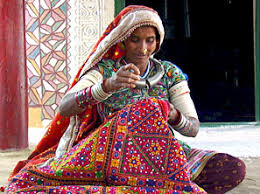
Image Credit: indian eagle
This embroidery is also influenced by romantic motifs as well as patterns of human figurines in dancing poses and dancing peacocks too. A lot of motifs are also inspired by Persian and Mughal arts that are inspired by animals. Delicate beadwork is also incorporated with great finesse.
There are seven distinctive styles of Kutch:-
Jat
Jat Garasia Jat work similarly "belongs" specifically to Garasia Jats, Islamic pastoralists who originated outside of Kutch. Garasia women stitch an array of geometric patterns in counted work based on cross stitch studded with minute mirrors to completely fill the yokes of their churi, a long gown. This style, displaying comprehension of the structure of fabric, is unique in Kutch and Sindh.
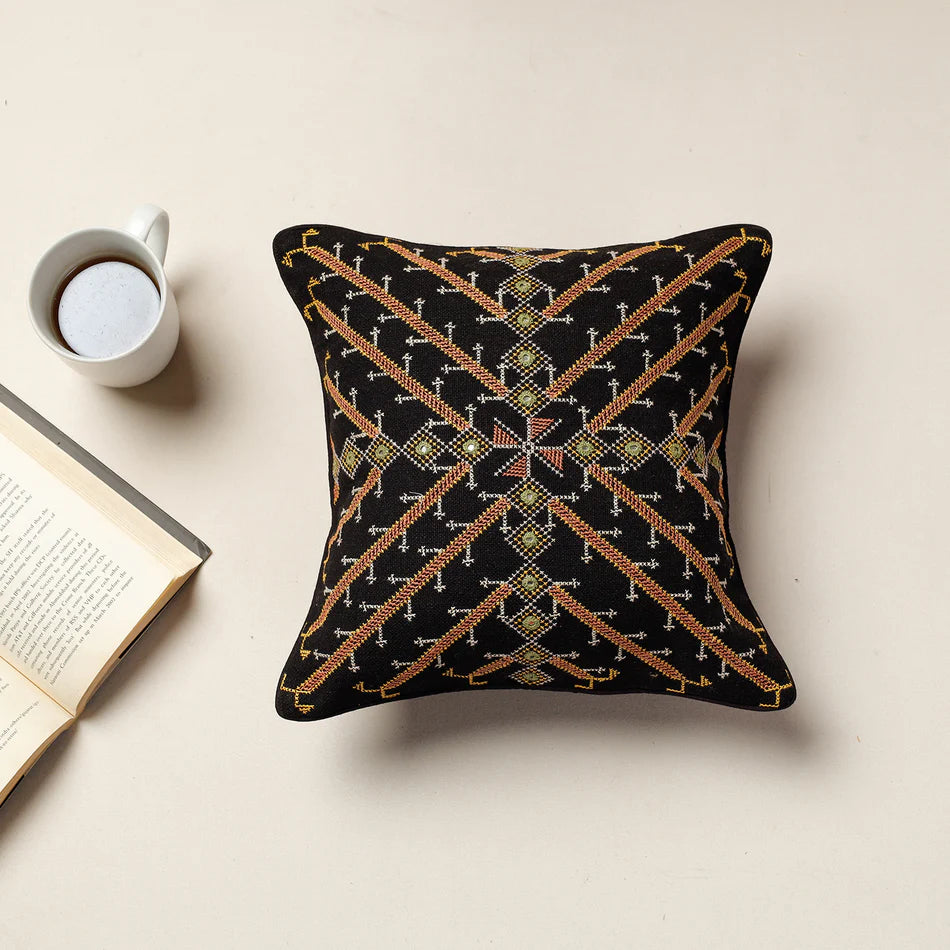
Mutav
Mutav The Mutavas are a small culturally unique group of Muslim herders who inhabit Banni, the desert grassland of northern Kutch. The exclusive Mutava style comprises minute renditions of local styles known by different names. Specific patterns of each style, such as elongated hooked forms and fine back stitch outlining in paako, and an all-over grid in haramji, are also unique to Mutava work.
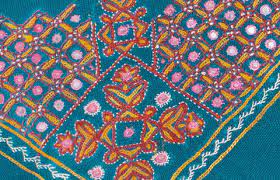
Image credit: Ethnics of kutch
Rabari
Rabari embroidery is unique to the nomadic Rabaris. Essential to Rabari embroidery is the use of mirrors in a variety of shapes. Rabaris outline patterns in chain stitch, then decorate them with a regular sequence of mirrors and accent stitches, in a regular sequence of colors. Rabaris also use decorative back stitching, called bakhiya, to decorate the seams of women's blouses and men's kediya/ jackets.
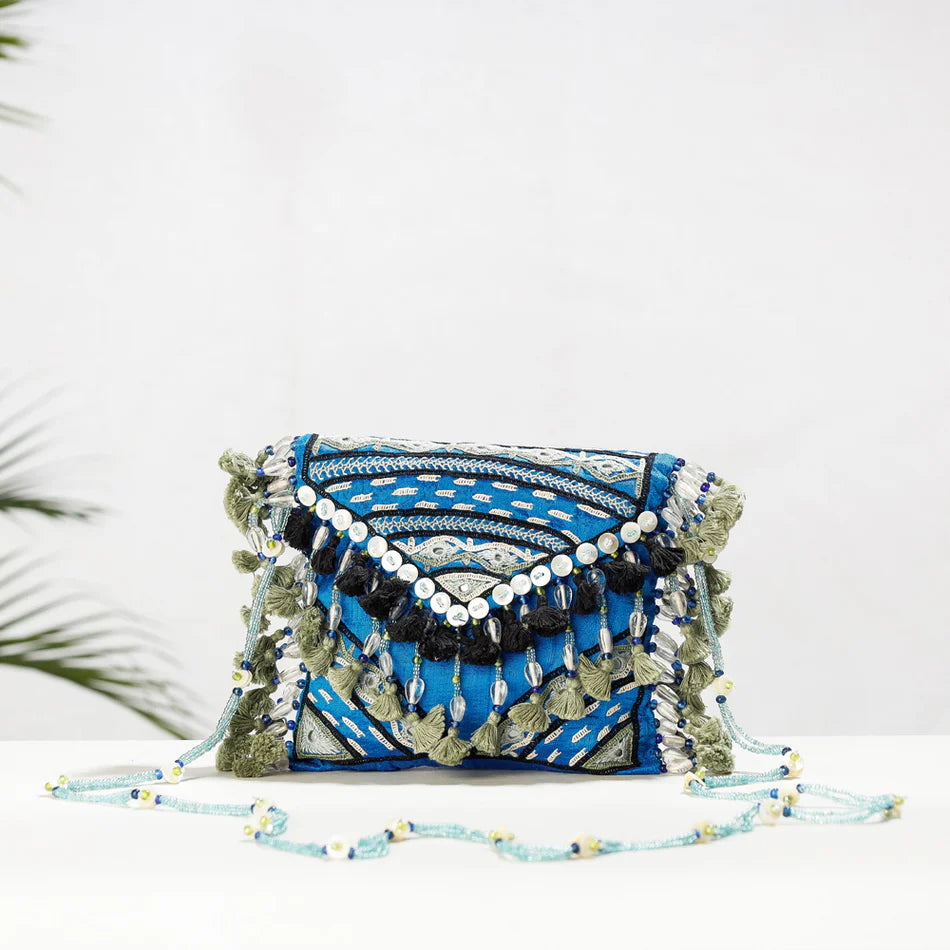
Suf
This embroidery is based on the triangle called ‘Suf’ which is counted on the warp and weft of the cloth where the stitch is worked from the back. Motifs are never drawn. Artisans never draw the designs on paper instead they straight away stitch. Their designs display immense detail in filling symmetrical patterns with tiny triangles.

Khaarek
This is a geometric style where the artisans work out the structure of geomtric patterns with an outline of black squares, then fill the spaces with bands of satin stitching that are worked along warp and weft from the front. Khaarek embroidery fills the entire fabric.
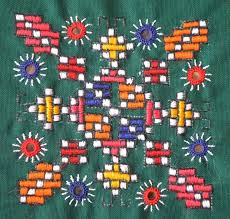
Image Credit: Pintrest
Paako
Paako means solid therefore it is a tight square chain and double buttonhole stitch embroidery. It is often finished with black slanted satin outlining. The motifs of paako are primarily floral arranged in symmetric patterns which are sketched in mud with needles beforehand.
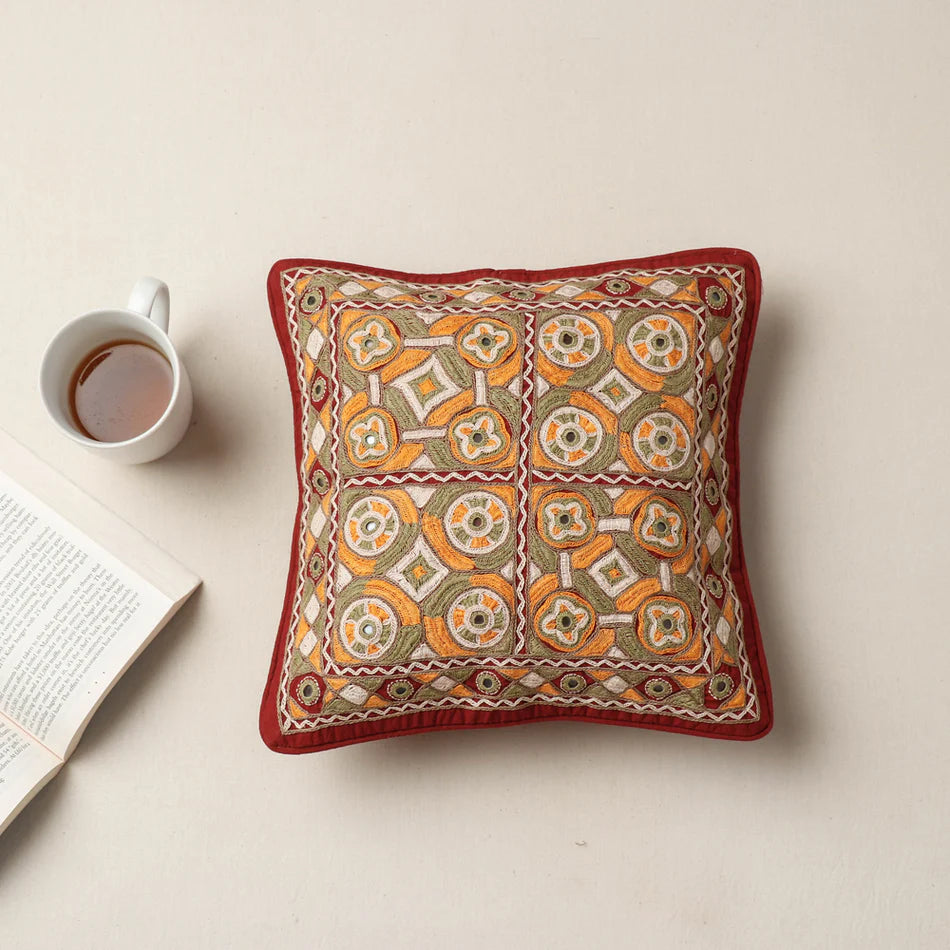
Blogs you might also like:
Abdul kumbar - khavda art
Bihar Sujani Embroidery
Banaras Toy Craft
 Verified Purchase
Verified Purchase





































Leave a comment (all fields required)